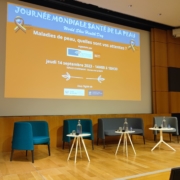Reaffirming at all levels the commitment to and participation of users
In an article published on 12th December 2023 on the occasion of the National Health Strategy, the High Anthority for Health identified four topics which require much effort and progress :
- Promoting the commitment to and the participation of users with health professionals ;
- Effectiveness of individual rights recognised in the laws of 2002 and those adopted afterwards;
- Representation of users by agreed organisations ;
- Reinforcement of users‘ knowledge.
For us, CLI, these four topics, to which must be added the lack of volunteers and financial means, are the main topics to work on during the coming years if we want to protect the survival of all voluntary organisations.
























 :
: